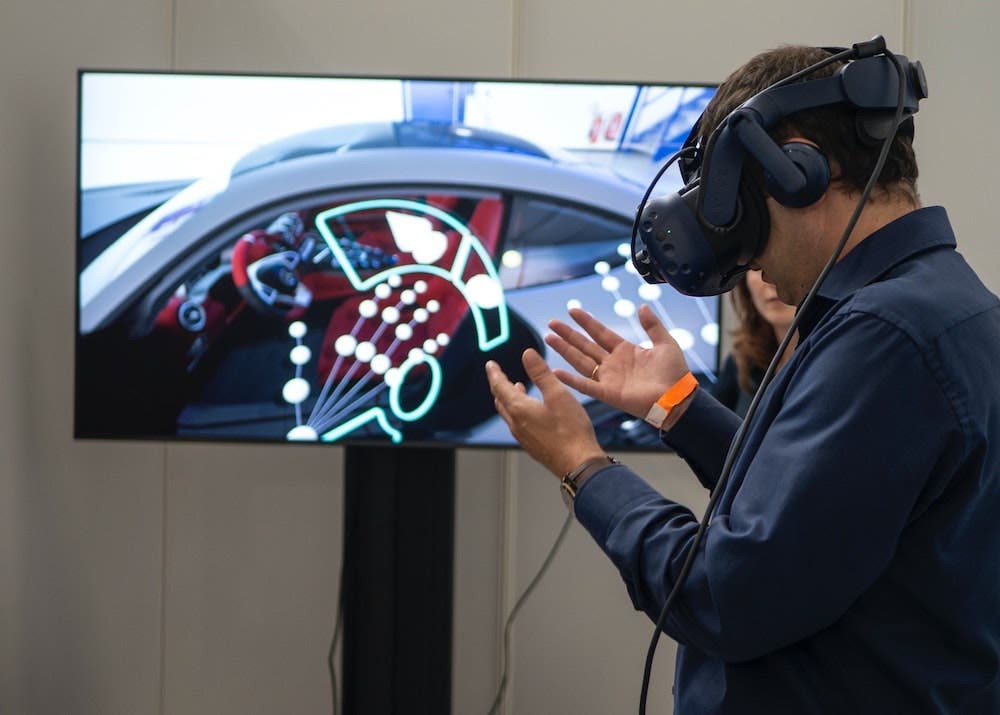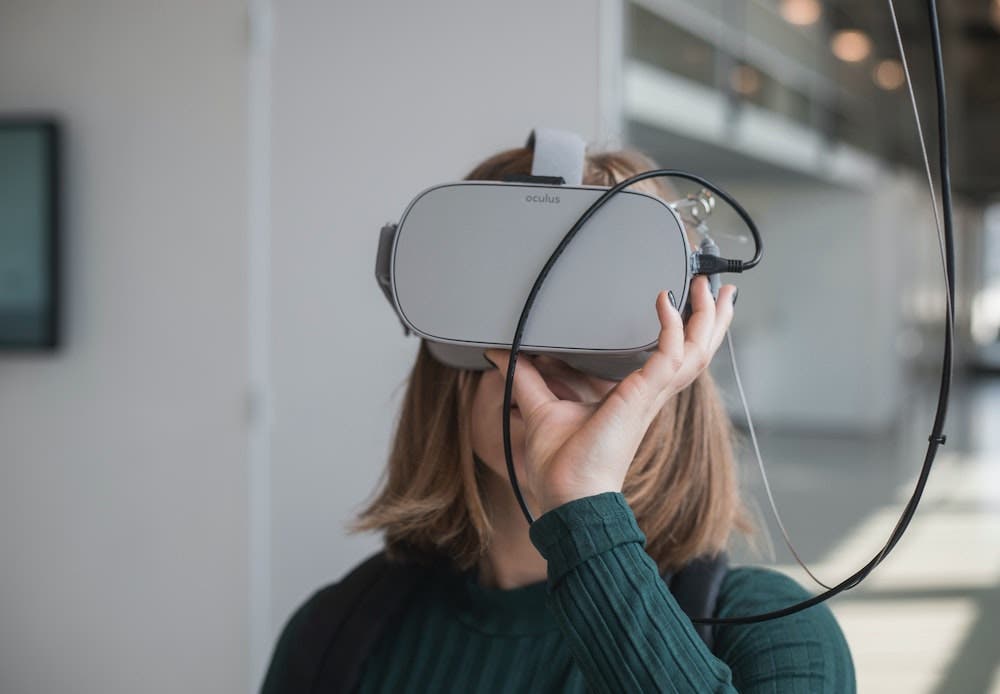The virtual reality world is slowly taking over gaming. Therefore, more and more companies are creating VR devices. The future of gaming is very bright with a new Oculus, and the PSVR 2 coming out next year. Before jumping in, VR gaming does have a few things to consider. One of them is motion sickness.
What is Motion Sickness?
Motion sickness in the gaming world can also be referred to as simulation sickness, virtual sickness, and cybersickness. Putting on a VR headset for the first time can be jarring. You are telling your brain you are moving when your body is sitting or static. The good news is, you can overcome these feelings. In this article, we’re going to break down how motion sickness starts, the symptoms to look out for, and how to stop it so you can enjoy gaming in the virtual world.
Symptoms of Motion Sickness
Motion sickness can happen right away, and it’s very important to take a break from gaming when you start to feel it come on. Here are symptoms to look out for while playing.
- Queasiness, nausea
- Cold sweats
- Dizziness
- Fatigue
- Headache
- Pale skin
- Balance disorder
- Eye strain
These symptoms can manifest themselves differently with each person. You know your limits better than anyone else. It’s always good to be on the safer end and pause, even if you’re about to beat the level.
What Causes VR Motion Sickness?
Simulation sickness is caused by virtual environments which give players the illusion of movement. This creates a disconnect between your brain and your body. While you are swinging your arms, shooting zombies, or moving around in a virtual Skyrim world, you remain in place. This immersion will typically cause sweating, dizziness, and headaches. Research into cybersickness is still very new and ongoing, especially since the technology for VR headsets is still incredibly new.
In many VR games, you are in motion and the world around you is ever-changing. This is a very strange feeling to many people, especially if they are not used to playing games. Putting on a VR headset for the first time can take a bit of time to get used to. A VR headset is designed to remove all sight and sound from your surroundings and immerse you into a whole new world. Based on scientific studies, motion sickness begins when your senses receive information that does not match your current situation.

How to Avoid VR Motion Sickness
How you plan on gaming in VR can help combat motion sickness. Sitting in a non-swivel chair can have a negative impact compared to a swivel chair. Gaming in a swivel chair allows your body to move with your head as you rotate around the virtual world. The same can be said while standing up. Your brain can accept movement more in a standing position than it can in a sitting position.
Cyber sickness is be divided based on senses. The first one being the general sense of feeling sick and nauseous brought on from virtual reality. The second is your sense of vision being impacted, which causes eyestrain and headaches. The third is your balance, which can lead to blurred vision and vertigo. Lastly, there is your sense of fatigue. Each body reacts differently to each sense. It’s important to understand what the symptoms are and why they occur.
How to Overcome VR Motion Sickness
The good news is, there are ways to get through motion sickness. Over time, your body can adapt to virtual reality. Gamers and scientists have also compiled ways to help you enjoy gaming in VR. If you feel the sudden urge of motion sickness, try these suggestions to help you continue.
Take Frequent Breaks
This might seem pretty obvious but, if you start to feel any symptoms of cyber sickness, the first thing you want to do is stop. Take a break, hydrate yourself, and come back when you’re feeling better. Time yourself with each gaming session and see if you’re able to increase your playtime. Now, it might take time but, with each passing day, you should notice your playtime increase before your symptoms come back. Don’t force yourself and don’t be ashamed to pause the game. It’ll always be there when you come back.
Game Choice
If you’re just getting into VR for the first time, I wouldn’t recommend a fast-paced game. Don’t start with a game where the world is moving incredibly fast, and your senses will be overwhelmed. It might be best to start with a game like Moss, where you are controlling a character in third-person and can enjoy the world around you. Starting with a slower game that doesn’t have quick movement will help your mind and eyes adapt. It also might be better to play a VR game where your perspective isn’t first -person. Playing a game in third-person allows you to take your time and slowly transition into a first-person perspective.
Read Your Headset’s Manual
I get it, the last thing you want to do is read the manual. We want to dive right into the console and start playing. Reading the manual before playing will give you tips on how to wear the headset and best practices while playing. Each headset is different. Each one comes with their own unique controllers. Familiarize yourself with the buttons and how your headset works. You’re jumping into a brand new world — make sure you read the map.
Adjust Your Headset
While reading the manual, you’ll come across instructions on how to fit your headset properly. If your headset isn’t set up properly you can not only lose immersion while playing, but you can get motion sickness. There are multiple ways to adjust headsets and not all headsets are the same. Make sure the screens are focused to your eyes, and the headset is fitted securely and snug so that it won’t fall.

Practice Focused Breathing
Just like hydrating during a gaming session, focused breathing is also incredibly important. I know I’ve repeated it often, but take it slow. With each head turn, take a breath and allow yourself to adjust to VR. Focusing on your breathing will help your body adapt and increase your comfortability. After beating a crazy level, take a moment to breathe before jumping into the next one. Breathe while you move, and breathe while you explore the new VR world.
Make sure to get fresh air as well. It can get pretty hot and stuffy indoors, especially during the summer. Take a moment to go outside and catch your breath. Fresh air does the body good, especially after gaming for multiple hours.
Dramamine and Ginger
If you’re used to getting sea sickness or motion sickness outside of gaming, you might be familiar with dramamine and ginger. Dramamine is an over-the-counter medication that relieves nausea, vomiting, and dizziness. Taking dramamine before playing could help prevent motion sickness, especially while gaming in VR. If you do decide on dramamine, speak to a doctor before taking it to make sure you can. Make sure it’s non-drowsy so you don’t fall asleep while playing.
Ginger also helps in combating nausea and motion sickness. Either eating ginger, drinking ginger ale, or taking ginger pills. In some cases, ginger actually could help more than over the counter medication. If you can handle the taste of ginger, try eating some ginger before playing.
Don’t Play if You’re Sick
If you are already sick, don’t force yourself to play. Take care of yourself and come back when you feel better. You can increase your symptoms and make things worse if you play while sick. Listen to your body, so you can come back stronger than ever. If you have a cold, sinus infection, eye strain, headache or even an upset stomach, playing a game in VR can make your symptoms much worse.
Conclusion
VR gaming is an incredible experience and it’s getting better over time! Understanding your body and how it reacts to virtual reality is key. When you put on a headset for the first time, you’re stepping into a brand new world. For some, they can adjust immediately. For others, it takes time. With these helpful tips, we hope you can dive into VR and enjoy every minute of it.






